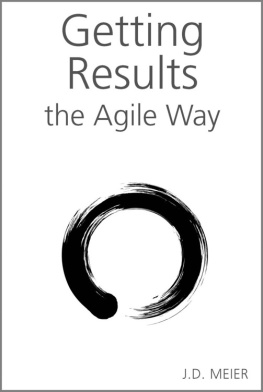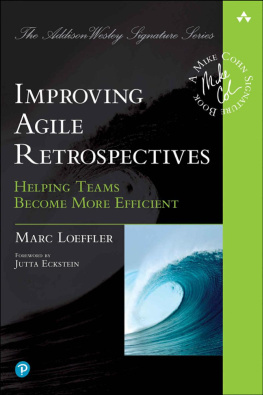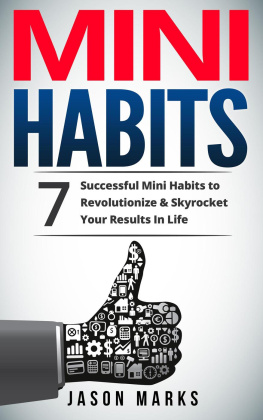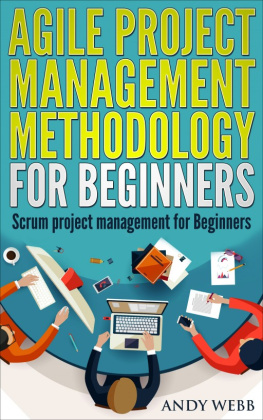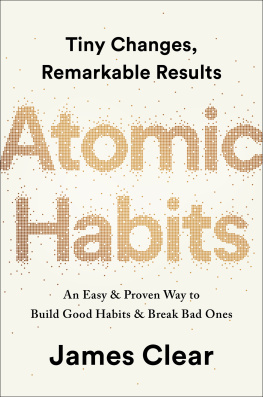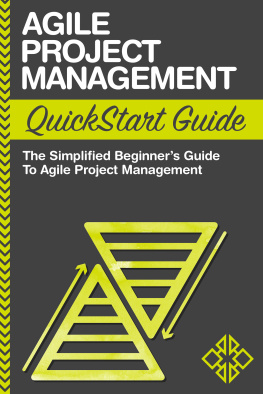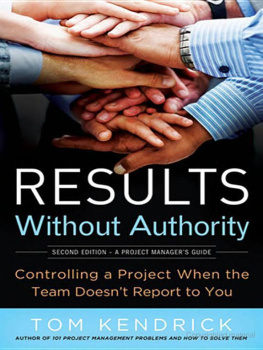Table of Contents
Getting Results the Agile Way
A Personal Results System for Work and Life
by J.D. Meier
Getting Results the Agile Way
Copyright 2010 by Innovation Playhouse LLC
All rights reserved. This book may not be reproduced in whole or in part, except for the inclusion of brief quotations in a review, without permission in writing from the author or publisher.
For information, please contact us:
Innovation Playhouse LLC
PMB 325
227 Bellevue Way NE
Bellevue, WA 98004
Email: innovationplayhouse@gmail.com
Website: http://www.gettingresults.com
Agile Results and Agile Way are trademarks of Innovation Playhouse LLC in the United States and/or other countries.
Library of Congress Cataloging-in-Publication Data has been applied for.
ISBNs:
- Print: 978-0-9845482-0-0
- Kindle: 978-0-9845482-1-7
- PDF: 978-0-9845482-2-4
- EPUB: 978-0-9845482-3-1
Legal Notice:
While all attempts have been made to verify information provided in this publication, the publisher and the author do not assume any responsibility for errors, omissions, or contrary interpretation of the subject matter herein. Further, readers should be aware that information in this book, including URL and other Internet Website references, is subject to change without notice.
Neither the publisher nor the author assumes any responsibility or liability whatsoever on behalf of any purchaser or reader of these materials.
The purchaser or reader of this publication assumes responsibility for the use of these materials and information. Please remember that each individuals success depends on his or her background, dedication, and motivation; there is no certain guarantee that you will get specific results.
To Eileen, Mom, Dad, Beck, and Brad
Acknowledgements
Id like to thank the following people for help with this book:
Adam Grocholski, Alik Levin, Andrew Kazyrevich, Andy Eunson, Andrea Fox, Anutthara Bharadwaj, Brian Maslowski, Chaitanya Bijwe, Chenelle Bremont, Daniel Rubiolo Mendoza, David K. Stewart, David Wright, David Zinger, Dennis Groves, Don Willits, Donald Latumahina, Dr. Rick Kirschner, Eduardo Jezierski, Eileen Meier, Erin M. Karp, Ethan Zaghmut, Gloria Campbell, Gordon Meier, Janine de Nysschen, Jason Taylor, Jeremy Bostron, Jill Heron, Jimmy May, John Allen, John deVadoss, Julian Gonzalez, Juliet du Preez, Kevin Lam, Larry Brader, Loren Kohnfelder, Mark Curphey, Michael Kropp, Michael Stiefel, Mike de Libero, Mike Torres, Mohammad Al-Sabt, Molly Clark, Olivier Fontana, Patrick Lanfear, Paul Enfield, Per Vonge Nielsen, Peter Larsson, Phil Huang, Prashant Bansode, Praveen Rangarajan, Richard Diver, Rob Boucher Jr., Rohit Sharma, Rudolph Araujo, Samantha Sieverling, Sameer Tarey, Scott Hanselman, Scott Stabbert, Scott Young, Sean Platt, Srinath Vasireddy, Steve Kayser, Tom Draper, Vidya Vrat Agarwal, Wade Mascia
I would also like to thank my loyal readers of my blog, Sources of Insight (http://SourcesOfInsight.com), for their helpful feedback.
Foreword
One thing is certainchange happens. It happens in your job and in your personal life. One of my favorite quotes on change is from John F. Kennedy:
Change is the law of life. And those who look only to the past or present are certain to miss the future.
As is the law of nature, our ability to adapt to change determines our success. To that end, we seek out the tools and practices that will bring about that success. When it comes to books, there are a wide variety of books that describe the next new approach or method, promising to improve efficiency and effectiveness if we just follow their prescription for success. Most of these models usually fall short because they fail to factor in the ability to adapt as a primary premise.
Getting Results the Agile Way has adaptability baked into the entire framework so youll be able to factor in and manage changes when they happen instead of them managing you. One of the things I like most about the book is it has simple tools and techniques to help you break a problem down, determine the key outcomes, and think through whats most important to get done daily, weekly, and monthlyall without losing sight of the end game or your long term objectives. Having these great tools and practices that really work will help you to embrace change.
Although written for a wider audience, those of us in software development will find some of the concepts in the book familiar. With agile software development techniques, there are several core premises that we follow to make impact and get results. When we recognize we arent getting the right result, we adapt and change our documented plan that is no longer working for us. If it has become out of date, we dont necessarily throw everything out, but we evaluate our standing plan. These Agile practices have become mainstream in the software development arena because they really help you get better results and have a greater impact.
Bottom line is its all about the impactnot the activities. This is precisely where Getting Results the Agile Way can help.
Ive seen J.D. Meier time and time again use the core principles outlined in Getting Results the Agile Way to deliver outstanding value which has had a positive impact for our customers and partners across the world. In the past, he has shared the approach with anyone who has asked. Now, he shares it with the rest of you. May you enjoy the rewards of bringing value, making an impact, and getting results!
Sincerely,
Michael Kropp
General Manager, Microsoft Corporation
A Word from the Author
Results was the name of the game, and I didnt have the playbook. When I first joined Microsoft more than 10 years ago, I was overwhelmed. It was a sink or swim environment. Every day I had to play catch up from the day before. I got more email than I could possibly read, more action items than I could possibly do, and challenges that were beyond my skills at the time. Inside the team, we affectionately called this scenario, trial by fire. There were no boundaries to my days, each day bled into night, and I was consistently burning the midnight oil. It reminded me of the saying, Whatever doesnt kill you makes you stronger.
However, I hadnt moved across the country, leaving everything and everyone I knew behind, to fail right off the bat. One of the first things I did to survive was study the best of the best. I found people in the company that got results, and I learned from them. I learned everything I could about productivity from anybody who was willing to share their system with me.
I learned the power of information management . I was amazed how factoring out action from reference helped me cut my information overload. Simply getting organized helped me get unnecessary information out of my way, and helped me find the important information faster. By paying attention to how I used information, I could optimize for my main scenarios. For example, some things were fire and forget (i.e., deal with it now and be done), while others were follow up. I was amazed at how much information I had optimized for look up, but never actually used.
I learned the power of time management, focus, and prioritization . Without time limits, I simply threw more hours at any problem: I treated time as my silver bullet, but I really was robbing Peter to pay Paul. I learned that by setting time limits on things like administration and email, I could better prioritize and focus. I learned to be accountable for my time.
I learned the power of technique . Without a technique, I couldnt consistently produce effective results. Of course, when I didnt have time limits, I didnt notice this because I simply threw more time at problems. Once I set limits, I had to find the most effective technique possible. For example, I found that keeping a simple list of actions outside of my email versus letting my inbox drive me, not only put me in control, but saved me countless wasted time and effort.

